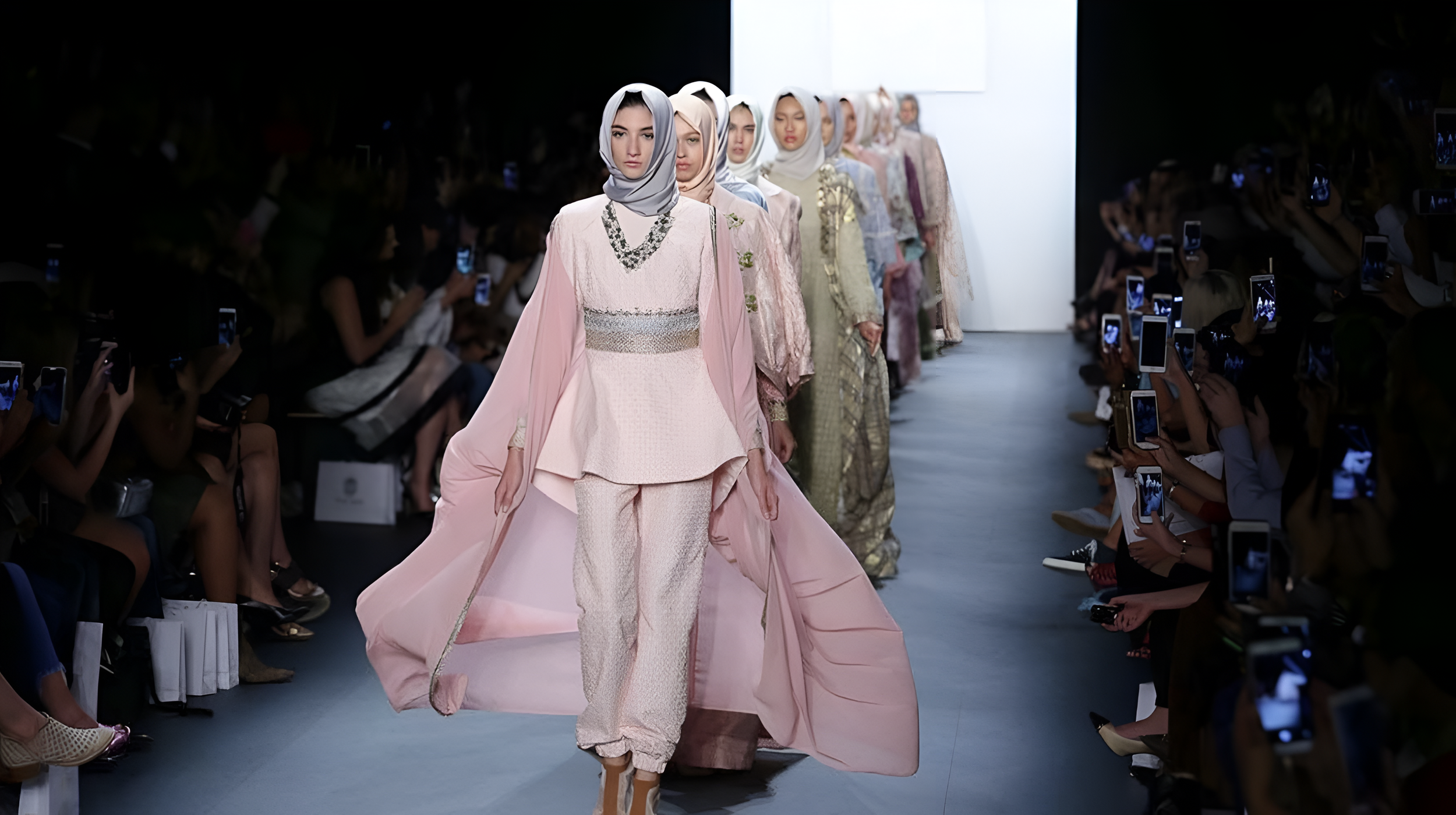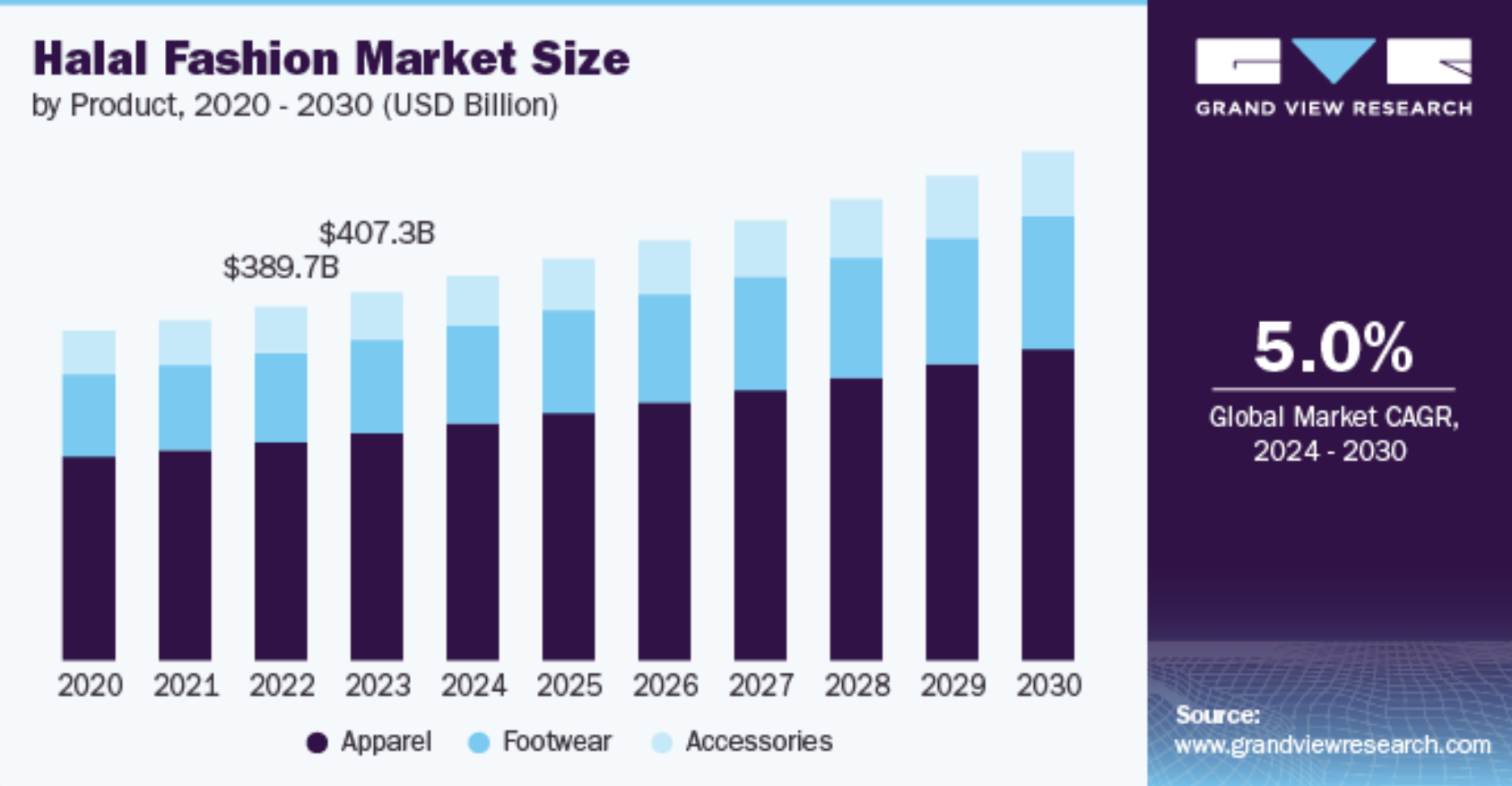A Growing Muslim Economy
From Jakarta to London, they’re balancing faith with a modern lifestyle, driving trends in fashion, food, and finance. With trillions in spending power and a talent for setting global styles, this is a market and a movement brands can’t afford to ignore.
A growing muslim consumer market
Understanding the Muslim Consumer
The global Muslim population is almost 2 billion people. That's a quarter of the world’s population and it offers a massive opportunity for brands. This isn’t a niche market; it’s a diverse, young, and digitally active group with serious economic power.
Marketers who understand how to reach the muslim audience by building campaigns that connect deeply will gain massive ROI. Let’s break down who these consumers are, why they matter, and how brands can reach them through digital, traditional, and influencer strategies.
A Diverse and Youthful Audience
Muslims live everywhere, from vibrant cities in Southeast Asia and the Middle East to growing communities in Europe and North America. Most people think muslims are mainly arabs. But only 14% of the muslim community are actually arabs. Over 60% are in the Asia-Pacific region, countries like Indonesia, Malaysia, Pakistan, and Bangladesh.
What stands out is their youth: the median age is 24, much younger than the global median of 30. Over a third of Muslims are under 15, with many being Gen Z or Millennials hitting their prime spending years. These urban, educated consumers are often glued to their smartphones, making them quick to adopt trends.
Balancing Faith and Modern Life
While faith and values shape the muslims lives to varying degrees, cultural practices and religious observance differ widely. In Indonesia, the largest Muslim-majority country, many Muslims lean secular, favoring mainstream brands over religious themes. Others actively seek products tied to Islamic values, like halal food, modest fashion, or Shariah-compliant finance. What ties them together is a blend of tradition and modernity.
Ogilvy Noor, an Islamic marketing group, splits Muslim consumers into “Traditionalists” and “Futurists.” Futurists, who mix a modern outlook with strong faith, are especially influential. This is where the young muslim feel home and relate. They want to be modern, open minded and “cool” whilst holding pride in their religious and cultural values.
Authenticity and ethics are non-negotiable. Many Muslim consumers prioritize brands that align with their values, like ethical sourcing or charitable giving (zakat). They also value environmental responsibility, which ties to the Islamic idea of taking care of the Earth. Brands that miss the mark risk backlash.
An Indonesian brewery tried marketing “non-alcoholic beer” to Muslims but was mocked mercilessly, with critics joking, “What’s next, halal pork?”
Futurists are a blend of islamic values and modern trends
Digital Habits
Muslim consumers are online, and they’re active. In many Muslim-majority countries, over 70% of internet use happens on mobile devices, with smartphone penetration in places like Saudi Arabia and the UAE among the world’s highest. Social media platforms like Instagram, TikTok, and YouTube are go-to spots for discovering brands, from modest fashion influencers to halal food vloggers.
Ramadan supercharges this digital activity. Searches for recipes, Islamic content, and deals spike at night. Messaging apps and social networks amplify word-of-mouth, with communities sharing tips and recommendations at lightning speed. A great product or campaign can go viral fast at that month.
Why This Audience Matters Globally
This market isn’t just big, it’s shaping industries and trends worldwide. Below we will mention the reasons why marketers need to pay attention.
Massive Market and a Growing Spending
The Muslim consumer market is set to hit 2.2 billion people by 2030, or 26% of the global population. Rising incomes and a growing middle class fuel what’s called the “halal economy,” covering food, finance, travel, fashion, and more. By 2025, Muslim spending on lifestyle sectors is expected to reach $2.8 trillion, with some estimates valuing the broader Islamic economy at nearly $5 trillion. Halal food alone was a $1.26 trillion market in 2021, projected to be $1.67 trillion in 2025.
Modest fashion is another powerhouse, with $318 billion spent in 2022, expected to hit $428 billion by 2027. Muslim travelers spent $102 billion in 2021, with forecasts of $189 billion by 2025. This young, eager audience is spending big on food, style, and travel, all while staying true to their values. These numbers all show how the Muslim economy is growing exponentially.
Global halal fashin market from 2020-2030
Setting Global Trends
Muslim consumers don’t just follow trends; they create them. Modest fashion, once a small segment, is now a major player in apparel, driven by Muslim influencers and designers. Brands like Gymshark, Nike and Dolce & Gabbana have launched modest fashion lines, while Victoria’s Secret made waves with a Ramadan collection in 2025. Nike’s 2017 Pro Hijab, a performance headscarf for athletes, sparked a trend among sportswear brands. These products often appeal beyond Muslim buyers, drawing in anyone who values inclusivity or style.
In beauty, halal-certified brands like Indonesia’s Wardah have pushed the industry toward “clean” products, free of harsh or impermissible ingredients. Islamic finance is another area of influence, with Shariah-compliant apps and investment platforms gaining traction, often appealing to non-Muslims interested in ethical finance.
Driving Innovation
Muslim consumers’ needs have sparked creative solutions. Unilever’s Sunsilk in Southeast Asia developed a shampoo for hijab-wearing women, keeping hair fresh under headscarves. Malaysia’s Proton explored an “Islamic car” with features like a Mecca-pointing compass. Hotels and airlines now offer prayer rooms, halal menus, and Ramadan services. Streaming platforms are adding Muslim-themed content to reach this young, content-hungry audience. These innovations often improve products for everyone, focusing on inclusivity and ethical standards.
Summary
The modern Muslim consumer is a young, connected, and economically powerful force that blends faith with modern lifestyles. They’re urban, tech-savvy, and trendsetters, with spending power projected to reach multiple trillions across food, fashion, travel, and finance. Authenticity and ethics are key to winning their trust. By engaging this audience thoughtfully, brands can tap into a massive market while driving innovation and shaping global trends.
For marketers, this isn’t just about inclusion, it’s a smart business move that will give high ROI. But you have to know how to create campaigns that align with their emotions and you have to know what strategies works for your niche.
At Viramira, we help brands engage Muslim audiences through thoughtful, targeted marketing. If your team is looking to better reach this market, we’d be happy to discuss, contact us for a free consultation.



